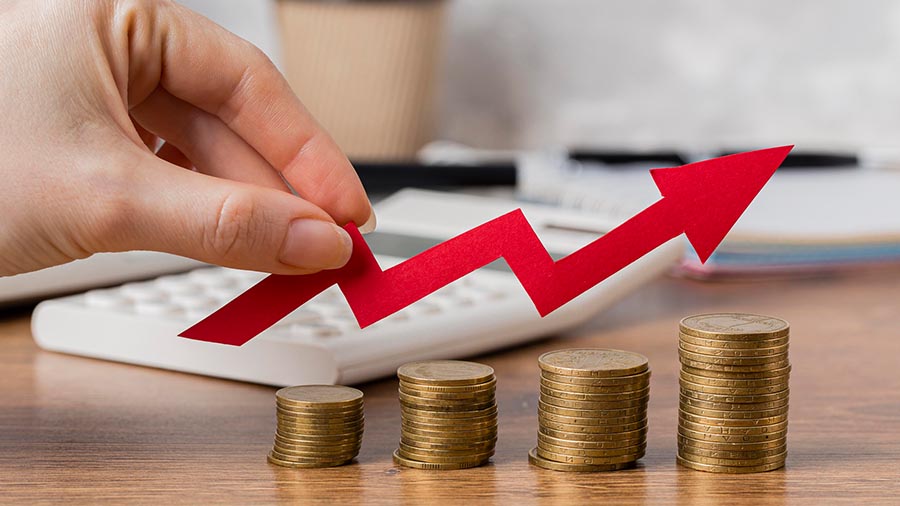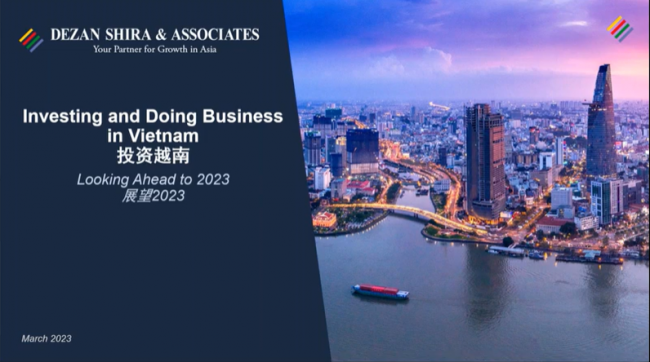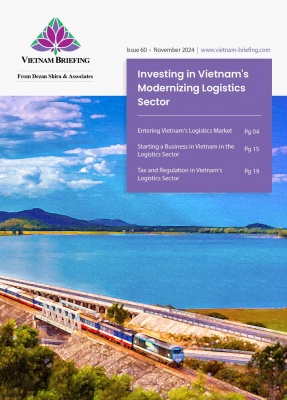Vietnam Approves Long Term Strategy on Environmental Protection: Decision 450
The Vietnamese government issued Decision 450/QD-TTg to promote environmental protection to 2030 with a vision to 2050. The Decision is a turning point for Vietnam’s national strategy as the country strives to achieve its dual goal of environmental sustainability and economic profitability.
Vietnam is facing an alarming rate of environmental damage and resource depletion, contributed by climate change. Currently, Vietnam ranks 4th globally with the highest rate of plastic waste, at 1.83 billion tons per year while water pollution is expected to cost the country 3.5 percent of its GDP by 2035, according to World Bank (WB). It is further forecast that climate change and natural disasters will cost up to 11 percent of Vietnam’s GDP by 2030.
Recognizing potentially far-reaching consequences on a societal level, the government issued Decision No 450/QD – TTg in April 2022, to 2030 with a vision for 2050 of ensuring that the environment is restored and the right to living in a clean and safe environment is fulfilled. The aim is to develop a society in harmony with nature and a circular economy, towards the goal of being carbon neutral by 2050.
Here, we explore the key highlights of the Decision and examine the potential for businesses and investors.
Developing a circular economy with sustainable production and consumption
Decision 450 emphasizes the ultimate importance of developing a circular economy. The government aims to steer industrialization in an environmentally friendly direction by promoting the development of green industries, high-tech industries, and ecological industrial parks while encouraging the utilization of environmentally friendly materials for input.
The government also prioritizes ecological agriculture and organic agriculture, in parallel with the abandonment of inorganic fertilizer, chemical pesticides, and antibiotics in cultivation, animal husbandry, and aquaculture.
It is also worth noting that the government encourages recycled materials as input for production, in substitution for raw materials. By doing so, manufacturers can avoid potential supply disruptions and generate profit from using used materials for input.
The promotion of a circular economy by the Decision has set a promising business environment. Investors should consider the potential of investing in organic fertilizers and pesticides, as the food production industry in Vietnam is shifting its focus to organic products and green cultivation.
The past few years have seen a surge in the number of organic food ventures and start-ups such as Organica and Dalat FOODIE, many of which have been certified by VietGAP and drawn a sizeable flow of consumers.
Meanwhile, Decision 450 has also created a demand for new services, such as product refresh services, remanufacturing components for future input, and the supply chain of recycled materials. This means new opportunities for investment and doing business in Vietnam.
Reinforcing waste management
Decision 450 especially puts emphasis on the regulation of solid and hazardous waste management as well as wastewater treatment, particularly in urban areas and industrial parks.
It further promotes the development of recycling industries, and recycling industrial parks; encourages investment into recycling facilities with modern technology, while gradually abandoning small-scale, manual recycling establishments that cause pollution in craft villages.
The government calls for investment in the modernization of the waste collection equipment, the system of transfer stations in urban areas, and the expansion of solid waste collection networks in rural areas.
The emphasis on waste management highlights opportunities for investment in the waste–to–energy sector in Vietnam as this is a promising waste treatment model.
The Decision also puts forward reusing, recycling, sorting, and treating plastic waste. After 2025, Vietnam will abandon the circulation and consumption of single-use plastic products and non-biodegradable plastic packaging.
In addition, from 2030, Vietnam will stop manufacturing and importing goods containing microplastic and promote the development of environmentally friendly materials. Investors may also look into developing eco-friendly packaging materials, such as paper, bamboo, seaweed, and cornstarch.
Promoting renewable energy and limit the exploitation of natural resources
The promotion of renewable energy has been a top priority for the Vietnamese government. In Decision 450, the importance of this industry has been emphasized as the key driver of the circular economy. Vietnam has a competitive advantage when it comes to green energy, thanks to the country’s geographical features which facilitate the development of both wind power and solar energy.
In 2020, Vietnam was in the top 10 countries with the highest solar capacity worldwide. Vietnam’s potential for wind power in Vietnam is substantial as the country possesses 8.6 percent of land area suitable for the construction of large-scale wind power farms. In parallel with the advantageous geographical features are the incentive policies for businesses operating in the green energy sector
Concerning air quality in metropolitan areas
In 2021, Vietnam ranked 36th out of 118 countries with the most serious air pollution.
To restore air quality, Decision 450 aims at accelerating the construction and up-gradation of public transport systems, mass passenger transport (MRT), and limiting the utilization of private means of transport, especially internal combustion engine (ICE) cars.
Nevertheless, challenges remain as the construction of the metro system in Vietnam has been dogged by delay and prohibitive costs. The Hanoi metro line only came into operation in November 2021, after a decade of delay while the metro line in Ho Chi Minh City is still in its construction stage.
Further, the government also targets the expansion of urban green space as well as developing greening plans for cities to purify the atmosphere in metropolitan areas.
The Decision also highlights the importance of electric vehicle development and implementation of the roadmap for abandoning vehicles that run on fossil fuels. Here, the potential for investment in electric vehicles (EVs) can be seen as Vietnam is shifting towards greener transportation.
However, as Vietnam’s EVs industry is still in its infancy, the government is yet to issue attractive policy incentives for investors wishing to enter the industry.
Restoring areas contaminated by chemical residues and land environment
The government prioritizes the replacement of outdated technological lines, machinery, and equipment that pose a threat to the environment and a risk of fire and explosion incidents. At the same time, the government aims to accelerate the restoration of the soil environment in areas contaminated by chemical residues and pesticides or solid waste landfills.
Controlling pollution in the marine environment and island
The long-term goal of the Decision includes monitoring and preventing pollution in coastal areas by calling for investment in modern infrastructure and equipment for treating hazardous wastewater discharges and domestic waste in coastal localities and islands such as Phu Quoc and Con Dao.
The discharge treatment system in Vietnam is currently low-tech and unable to cover an extensive area. According to the Vietnam Water Portal, the rate of wastewater collection in urban areas is only 12.5 percent-15 percent.
The Vietnam Water Supply and Sewerage Association (VWSA) states that Vietnam needs an additional amount of US$10 billion from investment ventures to upgrade wastewater drainage. Investors may step in and plan investments in wastewater treatment plants for coastal localities by applying cutting-edge technology to make the systems more efficient and capable of handling sewage on a larger scale.
Takeaways
The issue of Decision 450 on environmental protection is a timely development of the Vietnamese government as the country’s economy, society and ecosystem are all currently facing threats from climate change and pollution.
The Decision is also an indication of prospective investment opportunities that investors can take advantage of. For further details on how to actively invest in Vietnam’s industries during its shift to a green economy, contact our experts to get an insightful discussion.
Environmental protection in Vietnam FAQs
What is the biggest environmental issue with Vietnam?
Air pollution is the biggest environmental issue in Vietnam according to a survey by Q&Me. Q&me interviewed 792 Vietnamese citizens aged 18-49, and found 79 percent of respondents worried about the air quality.
How does Vietnam deal with air pollution?
Vietnam is dealing with air pollution through the National Strategy for Environmental Protection to 2030 with a vision until 2050. This policy sets targets to deal with environmental pollution, including air pollution. Vietnam plans to eliminate fossil-fuel vehicles, tighten emission controls, and add more green spaces to urban areas.
Does Vietnam recycle plastic?
Vietnam does recycle plastic but only one third of its plastic waste in total. The rest is often burned or buried in landfills.
What is Vietnam doing to reduce plastic pollution?
Vietnam is going to reduce plastic pollution by banning the use of single-use plastic bags, including in wet markets, from 2030, according to the Ministry of Natural Resources and Environment.
Is water pollution a problem in Vietnam?
Water pollution is a big problem in Vietnam. According to the World Bank, water pollution could reduce the GDP of Vietnam by 6% per year by 2035 if no action is taken to improve water quality.
About Us
Vietnam Briefing is produced by Dezan Shira & Associates. The firm assists foreign investors throughout Asia from offices across the world, including in Hanoi, Ho Chi Minh City, and Da Nang. Readers may write to vietnam@dezshira.com for more support on doing business in Vietnam.
We also maintain offices or have alliance partners assisting foreign investors in Indonesia, India, Singapore, The Philippines, Malaysia, Thailand, Italy, Germany, and the United States, in addition to practices in Bangladesh and Russia.
- Previous Article Vietnam’s Hiring Challenges and Potential Incentives for Retaining Employees
- Next Article Vietnam’s Diversification of Trade and the China Plus One Strategy






























